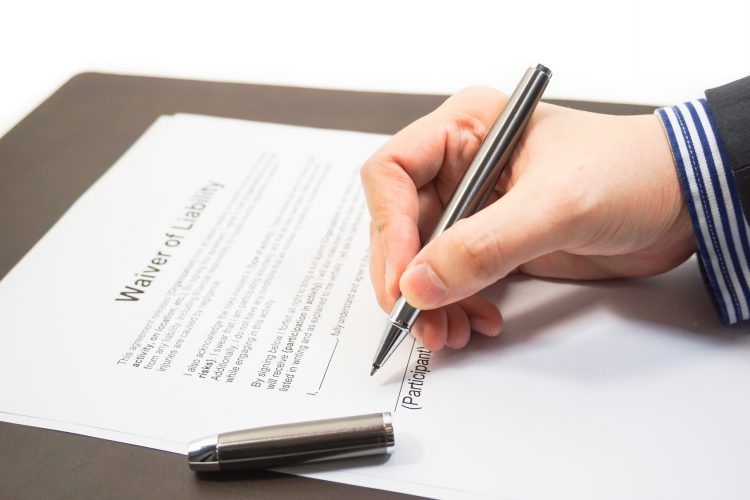2 Costly Mistakes to Avoid if Your Customers Sign Waivers

What do a multi-million dollar corporation, a large community-based organization and a publicly-traded company have in common? They're all making costly mistakes when it comes to the use of waivers. Hopefully your company isn't making the same mistakes...
Lesson 1: Make sure your customer-facing employees understand the purpose of the waiver and are properly instructed as to what information should be completed and by whom.
- A colleague of mine recently won a contest organized by a Toronto-based publicly-traded company. As she had recently suffered an injury, I offered to pick up the prize for her. When I arrived at the company's office, I informed its receptionist that I was there to pick up the prize on her behalf (the company had been made aware of this arrangement in advance). I was then instructed to complete a waiver. To my surprise, I was told that there was no need to complete the skill-testing question, there was no need to provide my address, and there was no need to even indicate that I was signing on behalf of my colleague. I was simply told to sign my name, and that would be that.
- Despite the fact that my colleague would be using the prize and bear the potential of injury from the use of the prize, I was assured that it was fine if I simply signed my name on the waiver. Presumably, the receptionist had been advised that everyone picking up a prize needed to sign a waiver, and provided somebody signed a waiver, everything (in the receptionist's mind) had been accomplished. Unfortunately, I'm not sure the company's legal department would share the same view. While I may have released and discharged the company from any damages I suffered, my colleague certainly had not. As a result, the company was left completely exposed to the exact claims it was hoping to avoid.
In this example, it most likely wasn't the fault of the company's receptionist. Handing out prizes, I can only assume, is one of hundreds of tasks that are part of her job. She likely was never informed of the importance of these waivers or the extent of the liability her company could be subject to if the waivers were not completed properly.
In your company, who is responsible for ensuring that waivers are properly completed? Do such individuals understand the importance of the waivers and why they need to be signed? It is critical that customer-facing employees understand the purpose of why certain documentation is required, so that the desired protection for their organization can be obtained.
Lesson 2: If your waivers aren't electronic, maybe they should be.
When a client asks me to draft a waiver, my goal is to craft something that is slanted substantially in favour of my client - full indemnification, limitation of liability for some nominal amount, a release of all claims, etc. But in my individual capacity, there's no way I want to sign a waiver that requires me to waive any claims, even if the service provider was negligent, and to limit the service provider's liability to $100.
In my individual capacity, I make a practice of modifying waivers that aren't in my best interest. Recent examples include modifying waivers that I was required to sign prior to attending an event held by a multi-million dollar corporation and prior to joining a popular community-based organization.
And the reason I was able to make those modifications? It's because the waivers were physical copies that were easy to modify by hand. And in both cases, because the waivers were simply added to a pile of waivers collected by employees who, once again, hadn't been properly informed about the purpose of the waivers, I had no problem making these modifications.
One of the key reasons people enter into contracts is to allocate risk amongst different parties, and waivers are no exception. The standard waiver signed by a customer is heavily biased towards the drafter of the waiver - if there was equal bargaining power, no one in their right mind would sign such a waiver. But if you want to participate in an activity, sometimes you have no choice but to sign the waiver.
A few months ago, I participated in another activity that required me to sign a waiver - but this this time, the waiver was electronic and could not be modified. I simply had to click 'I agree' in a number of places. The choices were simple: agree to the terms of the waiver and participate in the activity, or refuse to accept the terms of the waiver and refrain from participating in the activity. Maybe the service provider understood that what they had done was the smartest, lowest-risk approach. Or maybe they were just tech-savvy. But either way, they had made what appears to be the right choice. Unfortunately for me.
Does your organization require customers to sign waivers electronically in a manner in which they cannot be modified? If your organization allows customers to sign waivers by hand, does an employee check on-the-spot that no terms have been modified and all required consents have been provided? By following a few best-practices, your company can avoid making costly mistakes when it comes to waivers.
